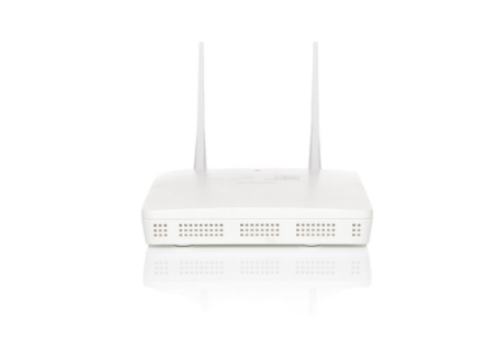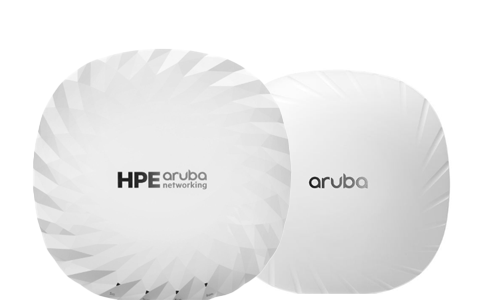What Is an Access Point?
An Access Point is the central link between a wired and a wireless network. It ensures that devices such as laptops, smartphones, or scanners can connect wirelessly to the company network. While simple routers often have built-in WLAN functionality, professional access points are designed for stability, range, and simultaneous connections.
A WAP is typically connected to the company network via an Ethernet cable and then provides wireless access to end devices. Especially in environments with many users, a dedicated Access Point offers far greater reliability than a router with integrated WLAN.
WAP, Router, or Repeater – What’s the Difference?
These terms are often confused but serve distinct purposes:
Routers connect local networks to the internet and assign IP addresses.
Access Points (WAPs) provide the wireless connection within an existing network.
Repeaters merely amplify an existing WLAN signal without creating a new one.
In corporate environments, WAPs play the leading role in wireless communication because they can be managed, scaled, and secured in a targeted way. Modern devices can be centrally administered, integrated into VLAN structures, and managed via controllers or cloud-based platforms.


What to Look for When Buying a WLAN Access Point
1. Transmission Standard and Speed
The first factor to check is which WLAN standard the access point supports. Currently, WiFi 6 (802.11ax) and the new WiFi 7 (802.11be) are the most relevant. WiFi 7 achieves theoretical speeds of up to 46 Gbit/s and offers extremely low latency – a major advantage in offices relying on cloud services or real-time applications like AR/VR.
For most businesses, WiFi 6 still provides more than enough performance. It delivers up to 40% higher data rates compared to WiFi 5, handles multiple simultaneous users efficiently (thanks to MU-MIMO and OFDMA), and offers improved coverage with lower power consumption.
2. Frequency Bands and Range
Access Points operate on 2.4 GHz and 5 GHz frequencies, with newer models also supporting 6 GHz (WiFi 6E and WiFi 7). The 2.4 GHz band covers a larger area but is more prone to interference, while 5 GHz and 6 GHz provide higher speeds at shorter ranges. The right choice depends on building layout and user density.
Tip: For office buildings or warehouses, use multiple strategically placed access points to ensure consistent coverage without dead zones.
3. Management and Scalability
For single devices, a simple local interface may suffice. As networks grow, however, central management becomes essential. Manufacturers like Cisco, Ubiquiti, or HPE Aruba offer controller-based or cloud-managed solutions that allow IT teams to monitor, configure, and update devices remotely.
Cloud-managed WAPs are especially useful for companies with multiple sites. They also enable seamless roaming, allowing users to move between access points without losing connection.
4. Security
Security is one of the most critical aspects when purchasing an access point. Poorly configured or unencrypted networks are an open invitation for attacks. Look for support of WPA3 encryption, integrated firewall features, and the ability to create VLANs for guest or IoT networks.
Professional access points often include RADIUS authentication, allowing centralized user management and detailed access logging – a must-have for corporate environments.
5. Power Supply
Access Points can be powered via a standard adapter or Power over Ethernet (PoE). PoE is far more practical, as it requires only a single cable for both power and data transmission. PoE-enabled switches make it easy to install access points even in places without nearby power outlets.
6. Installation Type and Environment
Different environments require different designs:
Indoor WAPs for offices, classrooms, or meeting rooms.
Outdoor WAPs with weatherproof housings (e.g., IP67 rating).
Ceiling-mount models for discreet installation and even signal distribution.

WiFi 7 – What Does the New Standard Offer Businesses?
WiFi 7 is the next leap forward in wireless networking, particularly suited for data-heavy and real-time business applications. Key improvements include:
Multi-Link Operation (MLO): Enables simultaneous communication on multiple frequency bands for better stability.
4K-QAM Modulation: Transfers more data per transmission unit.
Lower Latency: Critical for video conferencing, remote work, and VR applications.
Optimized Device Density: Efficiently supports hundreds of devices in environments like factories or educational institutions.
Although WiFi 7 is still rolling out, it’s wise to choose access points that already support the new standard. This ensures your network remains future-ready and easy to expand later.
Typical WAP Use Cases in Business Environments
A well-planned wireless infrastructure enhances flexibility, mobility, and productivity.
Offices: Reliable wireless access for meetings, VoIP, and collaboration tools.
Warehouses and logistics: Real-time data exchange for scanners and tablets.
Schools and universities: Seamless access for multiple users simultaneously.
Industrial environments: Connectivity for machines, sensors, and IoT devices.
Coordinating multiple access points properly helps avoid signal overlap or dropouts, maintaining consistent network performance.
Conclusion – Choosing the Right WAP for a Reliable Wireless Network
A modern WLAN Access Point is far more than an antenna box – it’s the foundation of efficient communication and stable connectivity. Choosing the right WAP means looking for up-to-date standards such as WiFi 6 or WiFi 7, strong encryption, PoE support, and centralized management. With these elements, you’ll build a high-performance, secure wireless network for your business.
Wireless Solutions and Expert Advice from IT-Market.com
At IT-Market.com, you’ll find a wide selection of new and refurbished WLAN Access Points, switches, and network components from leading brands such as Cisco, Ubiquiti, Juniper, and HPE - with up to 3 years of warranty for companies
Our certified technicians support you in planning, scaling, and maintaining your network. Our CleverCare service offers solutions fitted for your business.
Looking to modernize your wireless infrastructure or upgrade to WiFi 7?
Contact our team for tailored advice and discover the best WAP solution for your business network.
